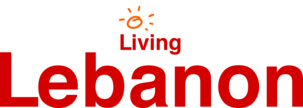Al-Dahiye
Al-Dahiye, literally ‘the suburbs’, is the name of several rural neighborhoods in the south of Beirut. Some of them, such as Haret Hreik, used to be agricultural villages that have lost their rural identity due to the wave of refugees.
With around 500,000 inhabitants, the Shi’ite dominated area is mainly known for its poverty and anarchy. It is the space of the oppressed, which arrived there from northern Beirut during the Civil War (1975 - 1990) and from the south of Lebanon after the invasion of Israel in 1978. At first, the Shi’ite Amal movement was ruling this area, e.g. taxing residents, with every lack of state control. Shortly after, in 1982, Hezbollah became involved, financing schools, hospitals and mosques; and installing water and electricity supplies. Also located there are the Palestinian refugee camps of Burj al-Barajne and Shatila, the latter known for its massacre during the 1982 Israel occupation.
From 1990, the Lebanese government slowly re-entered the area via reconstruction and reform projects. Presumably, Rafiq Hariri made a deal with Hezbollah requesting them to encourage the Shi’ites to withdraw from downtown in order to facilitate the Solidere project, in exchange for Hezbollah developing suburbs with the help of the government. After the assassinations of Hariri in 2005, the relations between Beirut and al-Dahiye worsened and the area again became Hezbollah territory.
During the July War with Israel in 2006, al-Dahiye was the target of Israeli bombing, resulting in several areas, including the Hezbollah auditorium, to be largely destroyed. The reconstruction of Al-Dahiye started in 2007 and was finalized in 2012. In 2013 and 2014, the area was subject to several terrorist attacks, presumably related to Hezbollah’s interference in Syria.
Visiting al-Dahiye is probably the best way to make up your own judgment about this area, and to experience its lively atmosphere. In order to gain a first impression of the hospitality of the neighborhood, start your visit by enjoying breakfast or lunch in one of the many tiny eateries. For a trendy place, try Cafe Yet located in Haret Hreik on Hadi Nasrallah Boulevard at the Sfeir Bridge Intersection, opposite Blom Bank.
Al-Dahiye can be reached by LCC bus 4 or by taxi. Don’t bring your camera, as taking pictures will most probably get you into trouble (see also Pictures in Hezbollah Areas).
Check the map below for an overview of all Cultural locations across Lebanon.

